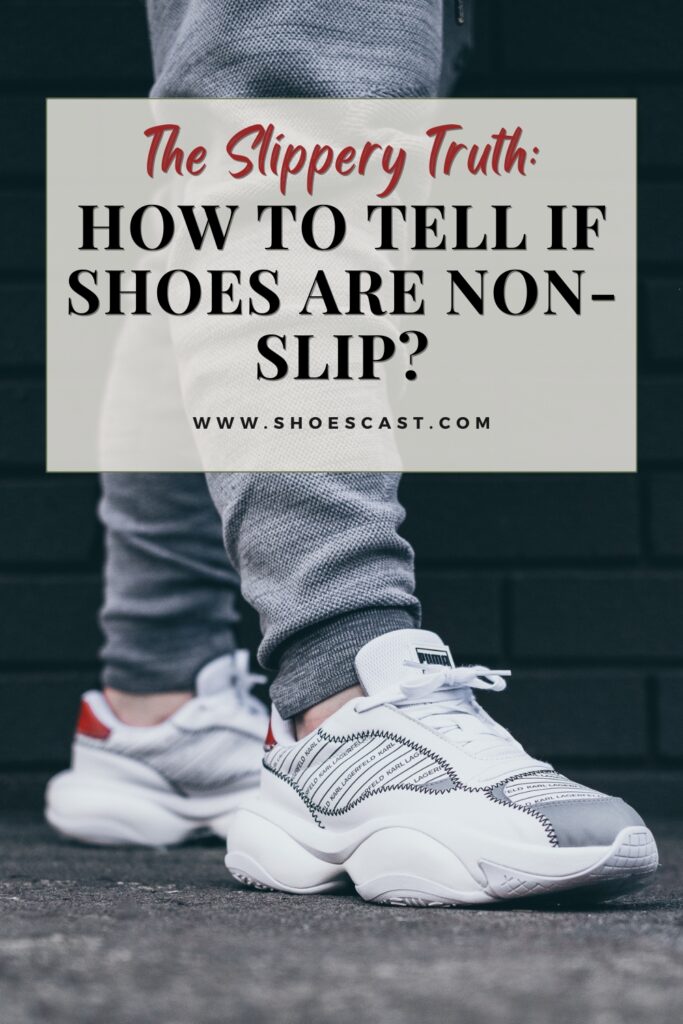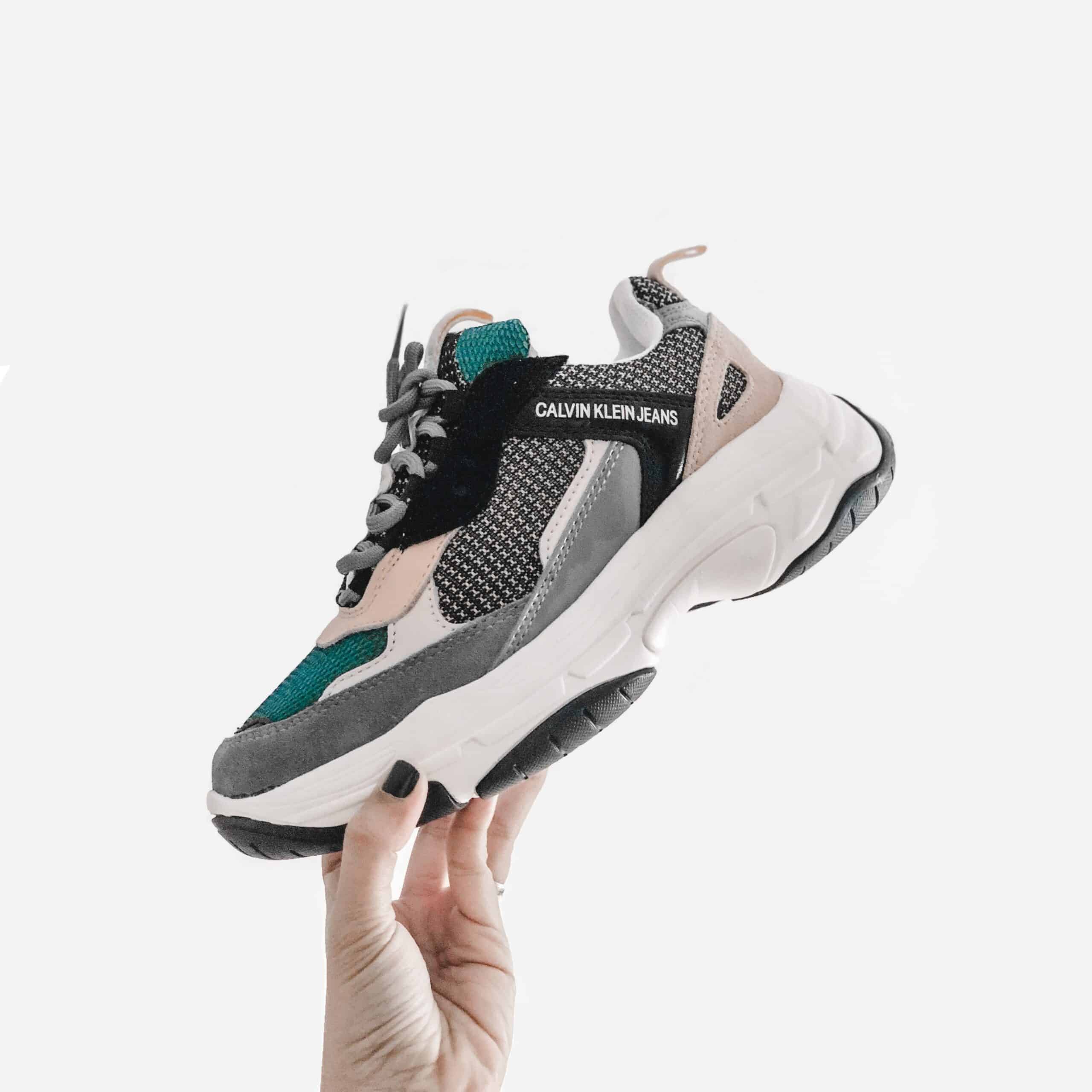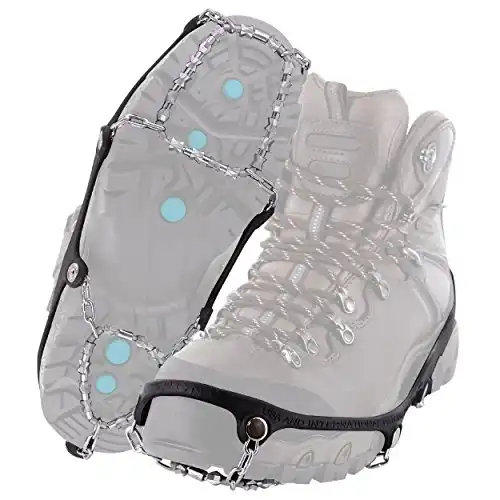Google searching “how to tell if shoes are non-slip” means one of two things – you’re either considering purchasing brand-new shoes and you’re hoping to get the features you need, or you’re checking whether the shoes you already bought have those features.
Whatever the case might be, we’re happy your search engine dropped you at our doorstep because we have the answers you’re looking for. Now, non-slip or slip-resistant shoes have been all the rage for quite some time.
From nurses, chefs, and roofing contractors, to regular people who aren’t fans of slipping and falling because the shoes they’re wearing don’t provide the necessary traction, everybody seems to have figured out how advantageous non-slip shoes can be.
For that matter, non-slip shoes typically feature rubber outsoles that provide a better grip when walking on slippery surfaces.
Non-slip shoes are versatile – while most people think of sneakers when they’re referring to non-slip shoes, work boots, combat boots, clogs, and even Crocs can be made with rubber outsoles or other means of providing traction.
Actually, non-slip sneakers are one of the highest-rated sneakers on Amazon which attests to the fact that most people (not only workers) prefer them over other sneakers. While Amazon does display the features you’re getting, you can never be too sure.
Don’t worry, we’re bringing you everything you need to know to answer your “how to tell if shoes are non-slip” question. Before you venture out to spend a bunch of money on designer shoes, the latest New Balance sneakers, or Dr. Martens boots, check out our step-by-step guide.
How do non-slip shoes work?
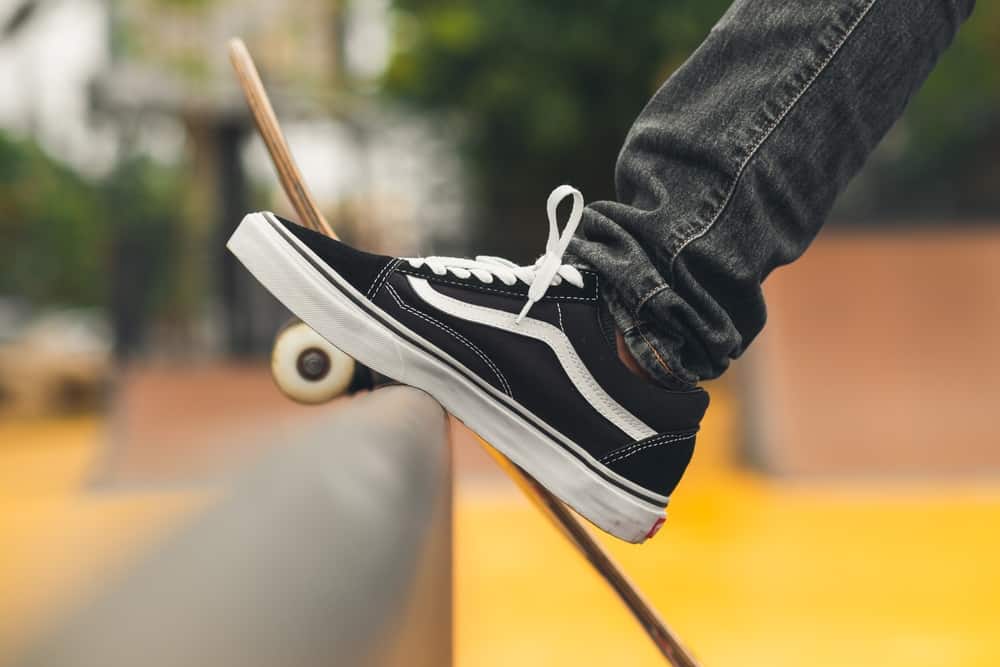
We’ve already brushed over the definition of non-slip shoes, but we might need to get down to the nitty-gritty of how non-slip shoes work.
How do non-slip shoes prevent you from slipping and falling, especially when you’re naturally clumsy? How do they keep you grounded when you can’t even keep yourself grounded?
Noon-slip shoes are designed with grippy treads meant to reduce slipping and falling, as well as to keep you stable while walking on wet, slippery surfaces.
They are meant for people who work in restaurants, construction, health care, and similar workplaces because they’re the ones that need slip-resistant design and construction the most. But, non-slip shoes are worn by pretty much everyone.
How do non-slip shoes work, though? First off, they’re made with rubber outsoles which provide an efficient grip on slippery, wet, and greasy surfaces. Then, they feature a design that allows them to provide that grip. For example, they’re rounded on the sides of the outsoles.
And, they’re equipped with patterned outsoles which provide traction. Actually, most non-slip shoes feature something known as the “interlocked tread pattern ingrained under the outsole.”
Other than that, non-slip shoes often offer features such as thick padded collars, cushioned insoles, orthotic footbeds with excellent arch support, waterproof uppers, and roomy toe boxes.
Of course, some of these features are easily traced, while others might go under the radar when you’re searching for an answer to your “how to tell if shoes are non-slip” question.
On that account, we’re bringing you a couple of things you can do to check whether you’ve found the right non-slip shoes for whatever event you’re attending.
How to tell if shoes are non-slip?
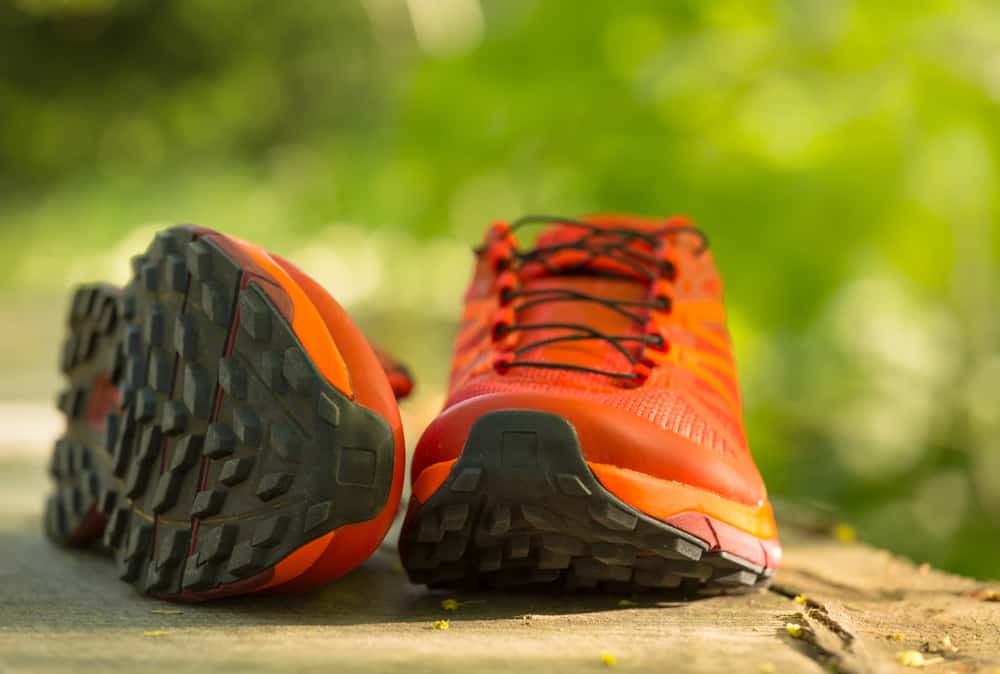
Now, that we’ve brushed up on our knowledge of what non-slip shoes are, we’re ready to learn more about how we can figure out for ourselves whether shoes are non-slip or not.
And, as you might have guessed, there are a couple of things to keep an eye on to distinguish slip-resistant shoes from other, regular shoes.
Whether you search for that “slip-resistant” label, check the pattern, the material, and the design of the outsoles, or conduct a “wear test,” we’re keeping our fingers crossed that you go home with the most comfortable, safe, and secure shoes ever.
So, keep reading to learn more about how to tell if shoes are non-slip or not.
1. They’re labeled as “slip-resistant”
“What a way to be obvious, right?” Whenever you’re wondering how to tell if shoes are slip-resistant or not, remember that most brands put the “slip-resistant” label on the shoebox, on the shoe, or on the page (when you’re shopping online).
We’re pretty sure brands aren’t allowed to lie about different features that come with their shoes which means you should be able to trust whatever they’re advertising. To make matters even better, non-slip shoes are supposed to meet ASTM standards. ASTM standards ensure that non-slip shoes are safe to use on dry, wet, and oily surfaces.
Whether you’re shopping at the store or online, you can always check for the “slip-resistant” feature to ensure you’re getting your money’s worth. When you’re at the store, you can ask the workers to only show you shoes that have rubber outsoles – and, when you’re shopping online, you can use filters for the same reason.
2. They feature a smaller tread pattern
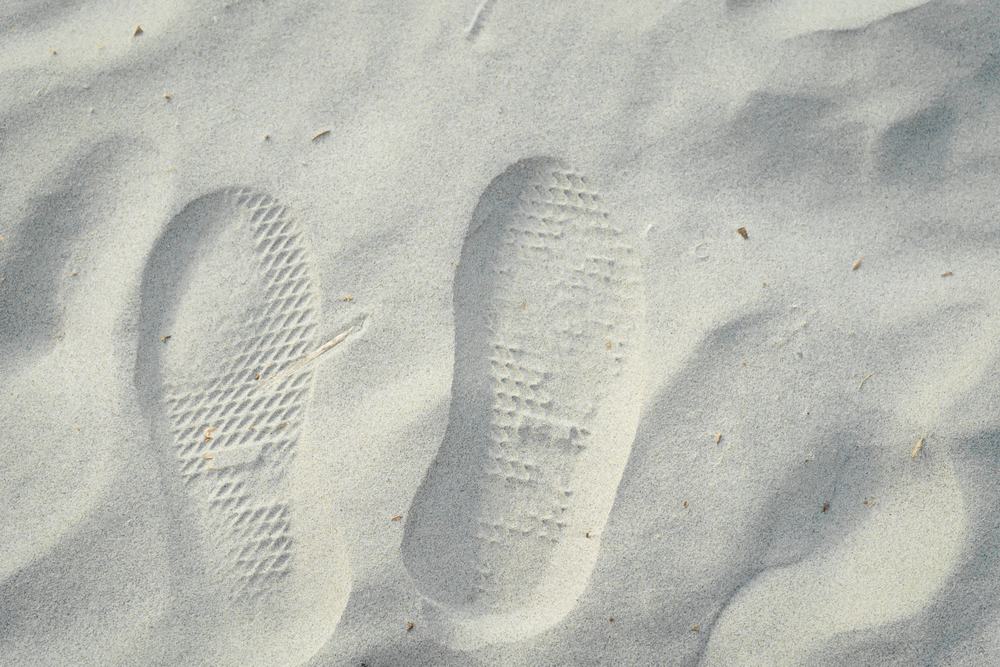
When you’re searching for non-slip shoes, you’re searching for something that’s guaranteed to keep you grounded through thick and thin (to say the least).
Non-slip shoes feature a smaller tread pattern for that reason, and you can physically check whether the shoes you’re planning on buying feature something of the sort.
On the off chance that you don’t know what we’re talking about, treads are parts of the shoe that touch the ground (the bottoms of the shoes). Tread patterns typically feature circles, squiggles, and hexagons on the shoe outsole that provide traction while you’re walking on dry, wet, or oily surfaces.
Tread patterns also prevent the water from getting trapped. As a general rule of thumb, the smaller the tread, the better the slip resistance. When you’re at the store you can always analyze the bottoms of your shoes to check the tread pattern.
But, when you’re shopping online, you can at least use the zoom option to check whether the pattern promises slip resistance.
3. They’re designed with EVA rubber outsoles
When you’re shopping for shoes make sure to check whether they’re made with EVA rubber outsoles. We suggest you shop online or check the features online before you even go to the store to make sure you know what you’re searching for. Why are EVA rubber outsoles something to ask for, though?
EVA stands for Ethylene-Vinyl Acetate. While that doesn’t sound like much to someone like you or me, Ethylene-Vinyl Acetate happens to be a type of plastic created to possess rubber-like properties.
EVA’s better than rubber because anything that’s made with EVA rubber outsoles stays softer and far more flexible than regular rubber.
EVA rubber also allows easy design, construction, and molding of the outsoles which makes them extremely comfortable. To repeat what we have learned, EVA provides you with both comfort and protection from slipping and fillings. TBH, we couldn’t ask for anything more.
4. They’re rough to the touch
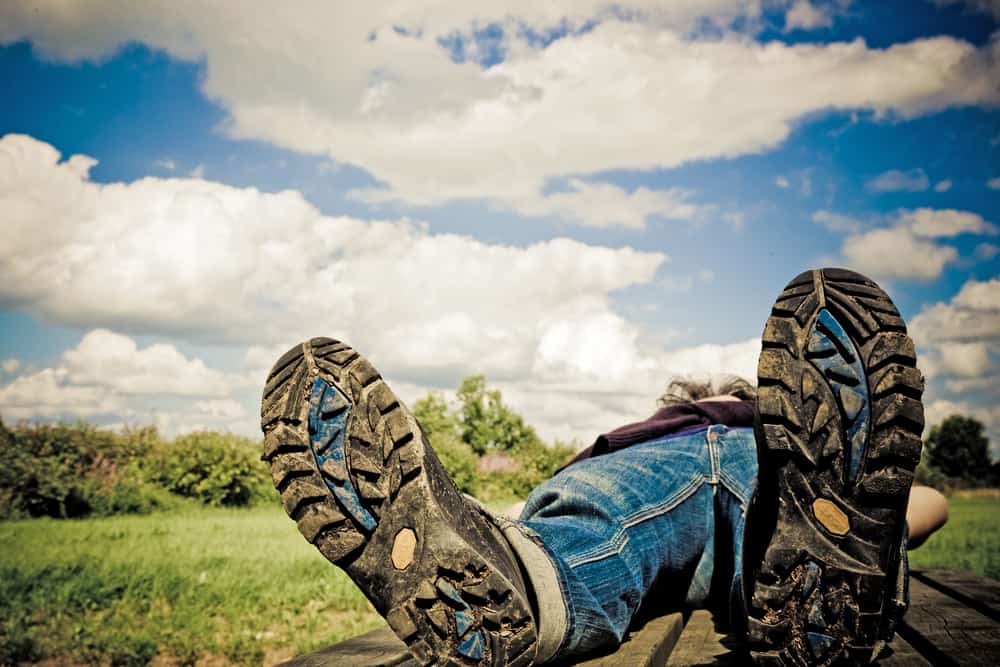
Now we’re getting more hands-on. When you’re trying to figure out how to tell whether your shoes are non-slip or not, the first thing that comes to mind might be to touch them. When you’re shopping online, you’re definitely robbed of that opportunity.
But, when you’re shopping at the store you might be able to run your fingers across the bottoms of the shoes you’re planning and buying. Check whether they’re rough to touch, whether they possess those circles, circles, squiggles, and hexagons we mentioned beforehand, and whether they feel grippy.
We’re not saying that you can 100% determine whether shoes are non-slip or not by touching them, but you can certainly have some sort of understanding of what you’re working with. And, on the off chance that the “touch test” fails, you can always resort to the “wear test.”
5. They pass your “wear test”
Now, you might not be able to do a “wear test” online, but there’s nothing stopping you from doing one when your shoes arrive (you always have the chance to return them when you figure out they don’t have the features you were hoping for).
Hence, when you’re wondering how to tell if shoes are non-slip while you’re at the store, don’t shy away from conducting your own “wear test.”
Here’s the thing, most stores don’t offer wet, slippery floors. But, shiny, slick floors should be enough for you to determine whether you’re happy with the amount of grip they offer.
Take the shoes you’re planning on buying, put them on nice and tight, and walk (or run) across the store. Check whether you’re slipping or sliding and whether you’re happy with how they’re performing.
Of course, don’t forget to pay attention to other features such as how the shoes fit on your feet, how they move across the floor, and whether they make you feel safe and secure. At the end of the day, only the best non-slip shoes will pass your wear test.
How to make shoes non-slip or slip-resistant?
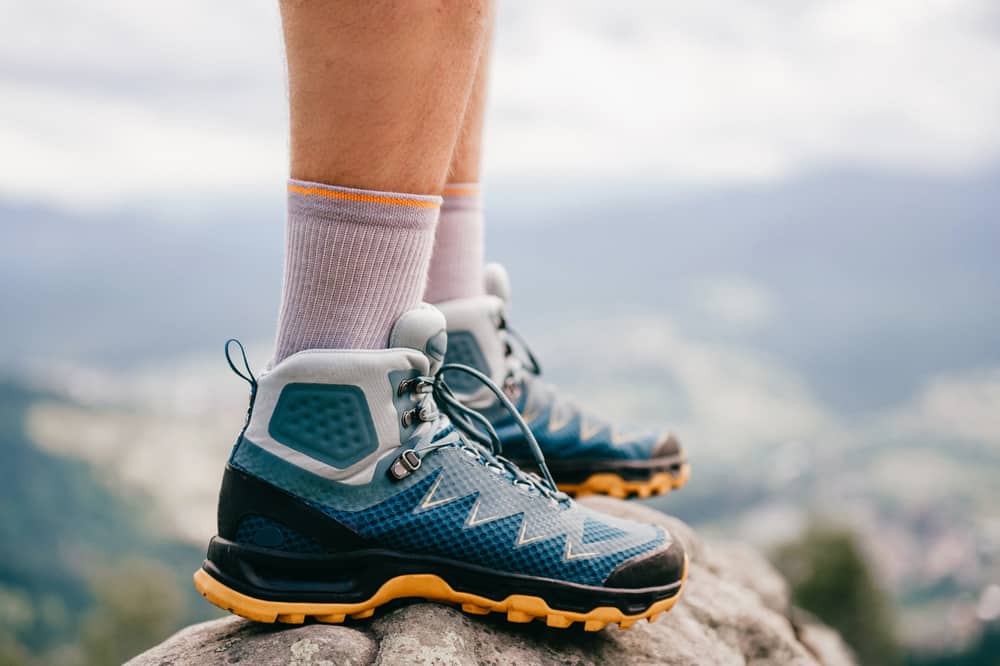
Non-slip or slip-resistant shoes are pretty easy to purchase considering the fact you can get them anywhere you go. However, you might not be happy with the amount of traction you’re getting. Or, you might not be satisfied with the amount of resistance you’re feeling while you’re waking.
Whatever the case might be, you might be trying to figure out how to make your shoes non-slip or slip-resistant. Worry not, there are a few things you can do to achieve the same (or similar) effect and prevent yourself from slipping, tripping, and falling.
1. Apply traction spray
“Argh, I’m over here Google searching how to tell if shoes are non-slip when I could be applying traction spray to my shoes to make them non-slip!” We wouldn’t be surprised to find out that’s what you’re thinking while reading these tips and tricks on how to make your shoes grippier.
But, we’re not lying – traction sprays are designed with a tacky substance that adheres to the shoes’ outsoles to add traction and make shoes less slippery. Some traction sprays are meant for worn-out shoes and can soften the rubber outsoles, as well as return the traction the shoes once possessed.
They’re super easy to use considering you’re supposed to just spray them on the bottoms of your shoes, leave them to dry, and you’re done.
2. Apply hairspray
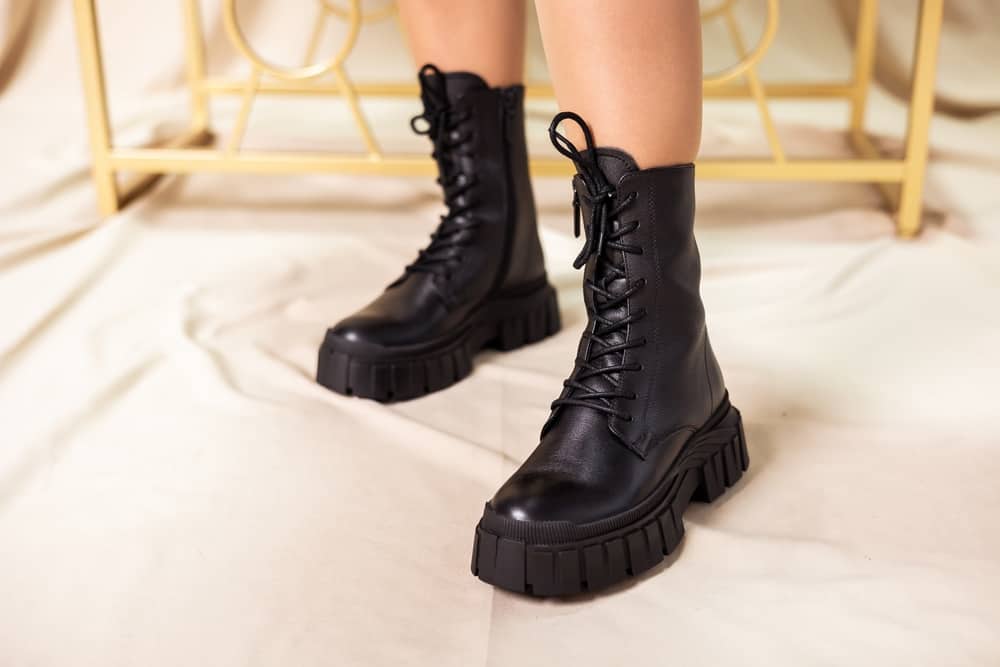
What do you do when you don’t have the opportunity to run to the store and get a proper traction spray? Apply the same spray you apply on your head, of course. We understand that sounds like a hoax, and we’re pretty sure that hairspray doesn’t work the same way a traction spray does.
But, hairspray can temporarily add traction to the bottom of your shoes. We put the emphasis on temporary because hairspray will collect dirt and debris and leave annoying, sticky residue behind, too. We’re pretty sure nobody’s looking forward to spending the rest of the day cleaning the mess caused by something that doesn’t even belong on a shoe.
We suggest you turn to hairspray only when you don’t have access to traction spray or other means of adding traction to your shoes. We also urge you to wear your shoes down or resole them as soon as you get the chance.
3. Apply a mixture of rubber glue and salt
A mixture of rubber glue and salt can act the same way a traction spray would. When you apply the mixture to the bottoms of your shoes and (of course) allow the mixture to dry, you’re guaranteed to notice a difference because rubber glue and salt mixed together add traction.
Making the mixture shouldn’t be much of a problem, either. Mix equal parts rubber glue and salt, and you’re pretty much down. Before you apply the mixture to the bottom of your shoes, make sure you remove any dirt or debris and clean them with rubbing alcohol.
Apply the mixture across the bottoms of your shoe, making sure to cover everything (except for the upper, of course). Allow your shoes to dry completely before you wear them.
4. Apply ice grips
Depending on the reason why you were searching for the answer to your “how to tell if shoes are non-slip” question, you might want to try to apply ice grips to your shoes to add some extra traction.
Don’t forget that ice grips might not be appropriate for different work environments. But, they’re guaranteed to get prevent you from slipping and falling because they’re much more heavy-duty than the sprays and mixtures we’ve mentioned beforehand.
Granted that you don’t know what we’re talking about, ice grips attach to your shoes with rubber harnesses and/or straps.
They’re equipped with spikes or screw heads that grab onto the ice to keep you from slipping and falling. They’re not appropriate for health workers or restaurant workers, but they might be of service to construction workers (and people who work surrounded by snow and ice, of course).
We recommend Yaktrax Diamond Grip All-Surface Traction Cleats as they’re great for walking on both snow and ice. They will make you feel safe and prevent you from slips, trips and falls.
5. Carve out the outsoles
Remember how we mentioned that one of the things that make shoes non-slip happens to be the tread pattern that’s on the bottom of the shoe?
When you purchase shoes that don’t possess the tread pattern or you damage the pattern by wearing your shoes for a longer period, you might need to carve them out to bring back some of that traction.
Now, we wouldn’t suggest you cut and carve brand-new shoes (especially when you have the chance to return them or swap them for different ones).
But, you can attempt to make your old, worn-out shoes grippier by creating similar patterns on the bottoms with a knife or something equally as sharp. When you attempt to do that, make sure you protect your hands with gloves and proceed with caution.
6. Sand them down
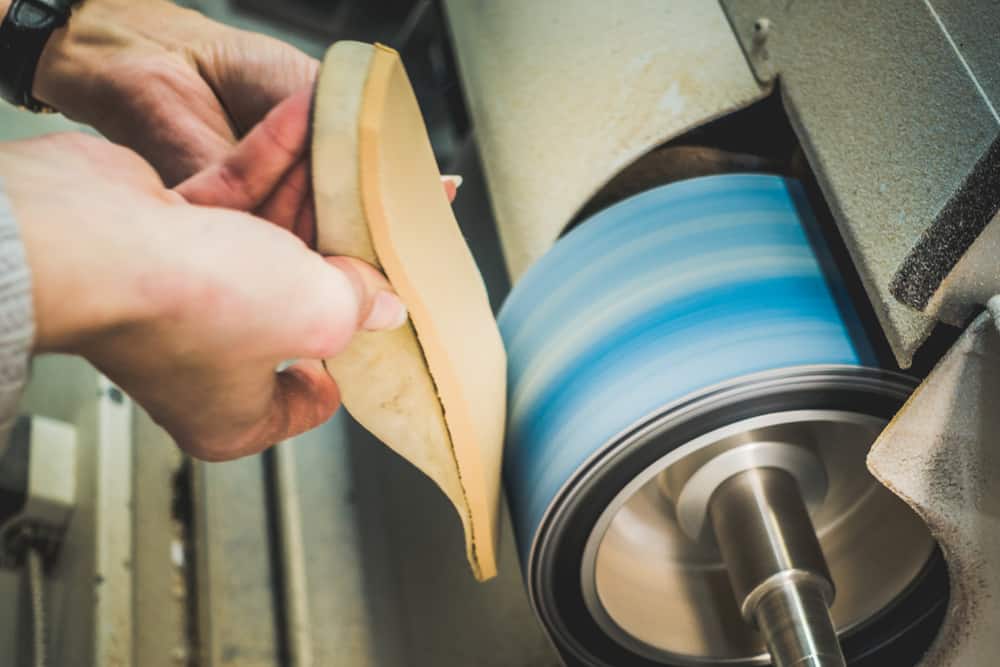
Other than carving the outsoles of your shoes, you can also try rubbing them with sandpaper. This may sound odd but sanding your shoes down works because the process creates more friction and offers a better grab.
There’s nothing difficult about the process at all. Wipe your shoes down with a clean, cotton cloth. Try cleaning them with rubbing alcohol, too. Make sure there’s no dirt or debris on the outsoles before you start. Go across the bottom of the shoes with sandpaper, remove excess dust, and you’re good to go.
7. Resole them
When everything else fails, you can always resole your shoes. Whether you’re wondering how to tell if shoes are non-slip because you’re planning on buying them or because you already bought them, don’t forget you always have the possibility to resole them to make them fit your needs better.
And, resoling can be a cost-effective way to bring your worn-out shoes back to life. Now, you can get them professionally resoled (which we’re all for).
Or, you can save some money by resoling them yourself. Remove your old shoe sole, trim the midsole of your shoe, attach the new sole to your shoe, and stitch or glue on the new sole. We know we’re making the whole thing sound easy, but that’s pretty much everything you need to do.
8. Wear them out
Now, there’s always a possibility you’re not a fan of DIYs and you don’t have the money to get your shoes resoled. And, you need better outsoles because you’re slipping and falling all the time. Though that might sound strange, you can try wearing your shoes down.
Walk on rough, uneven surfaces, sand them down, carve them out, and do whatever you need to do to make them as damaged as possible. When you do that, the outsoles of your shoes should be bumpy enough to offer friction. Whatever option you decide to go for, good luck!
Read more: Best Shoes To Wear With Scrubs: The Comfiest Top 12
